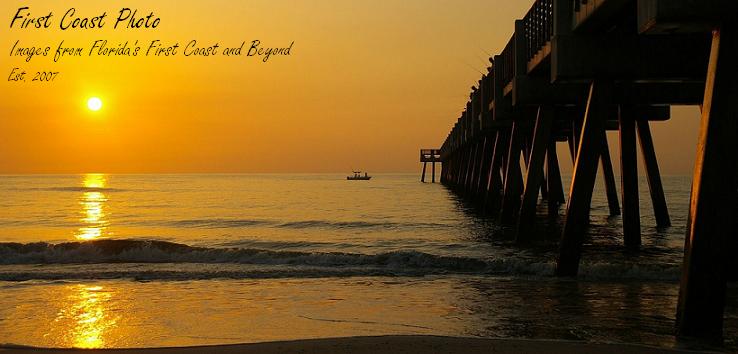The picture below is of the main entrance road into Bulow Plantation Ruins State Park. It should give you an idea of the terrain. When you turn off of the main road onto this narrow, tree-lined, dirt trail barely big enough for a single vehicle you know you have left modern civilization behind. For about two miles you drive straight - no curves or turns - through moss covered oak trees, over pumps and potholes in the road, slowly down a very gentle slope.
 At the end of that long dirt road you come to a clearing with a park ranger building, a sign telling about the history of the plantation, a wooden fence outlining what would have been the small plantation house - nothing of it remains today but the limestone foundation of the interior walls - and a boat ramp on Bulow Creek.
At the end of that long dirt road you come to a clearing with a park ranger building, a sign telling about the history of the plantation, a wooden fence outlining what would have been the small plantation house - nothing of it remains today but the limestone foundation of the interior walls - and a boat ramp on Bulow Creek. When this was a plantation back in the early 19th century these marshes would actually have been rice patties - not uncommon in northeast Florida and other parts of the southeastern coast. Before cotton became "king", rice was a big cash crop on coastal plantations (not farther inland, there was something about the salt air that helped it grow). So the view below and above would have been a covered by a sea of rice plants instead of marsh grass.
When this was a plantation back in the early 19th century these marshes would actually have been rice patties - not uncommon in northeast Florida and other parts of the southeastern coast. Before cotton became "king", rice was a big cash crop on coastal plantations (not farther inland, there was something about the salt air that helped it grow). So the view below and above would have been a covered by a sea of rice plants instead of marsh grass. Below is a shot of the undergrowth of the woods that cover most of the park grounds today. In the 1830's, during the sugar mill's heyday, this all would have been cleared fields planted in sugar cane, which grows fairly tall, but there would have been few trees. The scene below is more what happens in most of Florida when mother nature is left alone to take over an area - pine trees, palmetto bushes, various other small trees and bushes... and lots of snakes, spiders, opossums, raccoons, armadillos, birds, and if you are lucky, wildcats, bobcats, panthers, etc.
Below is a shot of the undergrowth of the woods that cover most of the park grounds today. In the 1830's, during the sugar mill's heyday, this all would have been cleared fields planted in sugar cane, which grows fairly tall, but there would have been few trees. The scene below is more what happens in most of Florida when mother nature is left alone to take over an area - pine trees, palmetto bushes, various other small trees and bushes... and lots of snakes, spiders, opossums, raccoons, armadillos, birds, and if you are lucky, wildcats, bobcats, panthers, etc.




No comments:
Post a Comment